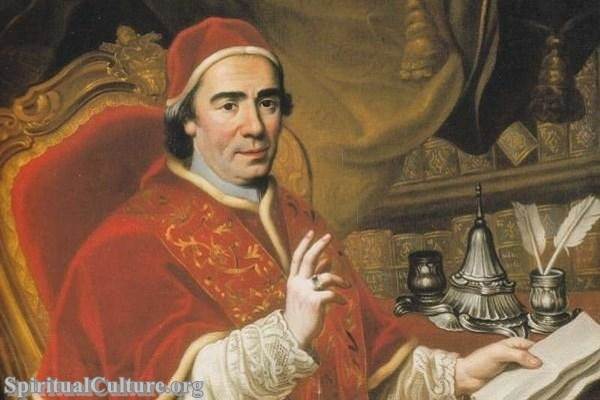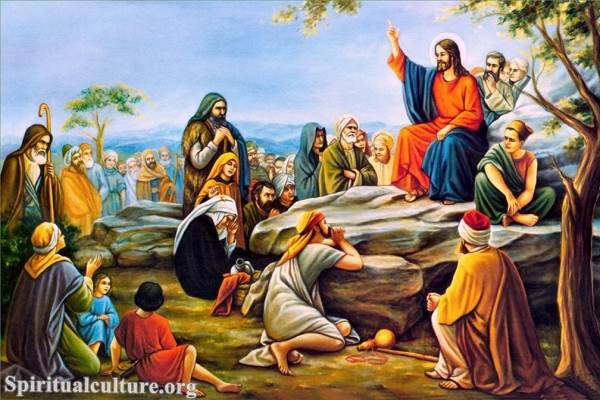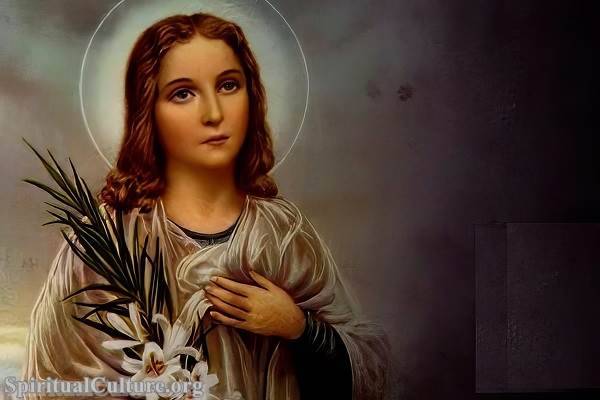Catholicism, as one of the world’s largest and most enduring religious traditions, is rich in diversity. Within its vast expanse, the faith accommodates a wide range of practices, beliefs, and spiritual disciplines. Among these are forms of Catholicism that are known for their rigorous adherence to religious principles and austere lifestyles. These forms are often associated with monastic orders that have chosen to live out their faith in ways that emphasize simplicity, silence, and self-denial.
In this article, Spiritual Culture delves into the strictest forms of Catholicism, exploring the key factors that define their strictness, the religious orders that embody these principles, and the impact these practices have on individual faith and the broader community.
Understanding Strictness in Catholicism
Key Factors Defining Strictness
Strictness in Catholicism is defined by several interrelated factors, including theological rigor, liturgical discipline, ascetic practices, and a profound commitment to the vows of poverty, chastity, and obedience. These factors are not merely theoretical; they manifest in the daily lives of those who commit to them, shaping everything from prayer routines to work habits and even interpersonal interactions. The strictest forms of Catholicism are typically characterized by a desire to return to the early practices of the Church, often through a literal interpretation of religious texts and a stringent application of the Rule of St. Benedict, which has been a foundational guideline for many monastic communities.
Differences Among Catholic Sects
While the Catholic Church is united by core doctrines such as the belief in the Trinity, the authority of the Pope, and the importance of the sacraments, there is significant diversity in how these beliefs are practiced. This diversity is particularly evident when comparing the practices of different religious orders and communities. Some Catholic groups adopt a more lenient, pastoral approach to religious observance, focusing on outreach and adaptation to contemporary society. In contrast, the strictest forms of Catholicism maintain a more rigorous and unyielding interpretation of Church teachings, often rejecting modern innovations in favor of traditional practices. These differences can lead to varying lifestyles, with some communities embracing a more ascetic existence that involves greater seclusion, silence, and a heightened focus on penance and contemplation.
Prominent Strict Religious Orders
Carthusian Order
The Carthusian Order is perhaps the most emblematic of strict Catholicism. Founded by St. Bruno of Cologne in 1084, the Carthusians are known for their unique blend of solitary and communal monastic life. Each monk lives in a separate cell, where they spend the majority of their time in prayer, reading, and manual labor. The Carthusians follow a nearly complete vow of silence, speaking only during specific communal prayers or when absolutely necessary. Their lifestyle is marked by an extreme form of asceticism, including fasting, vigils, and a minimalist approach to material possessions. The order’s motto, “Stat Crux dum volvitur orbis” (The Cross stands firm while the world turns), reflects their commitment to a life rooted in spiritual stability amidst worldly change.
Cistercian Order
The Cistercian Order, founded in 1098 by a group of Benedictine monks seeking to return to a purer form of monastic life, is another prominent example of strict Catholicism. The Cistercians sought to reform the Benedictine tradition by emphasizing manual labor, simplicity in worship, and a return to the austere lifestyle envisioned by St. Benedict. Cistercian monasteries are often self-sufficient, with monks engaging in agriculture, brewing, and other forms of manual labor to sustain their communities. The order places a strong emphasis on liturgical prayer, with the Divine Office being chanted in its entirety, often in Latin. The simplicity of Cistercian architecture and liturgy reflects their commitment to avoiding distractions that could lead monks away from their spiritual focus.
Trappist Monks
The Trappists, formally known as the Order of Cistercians of the Strict Observance, represent an even stricter branch of the Cistercian tradition. Established in the 17th century as a reform movement within the Cistercian Order, the Trappists sought to return to the original, rigorous practices of their forebears. Trappist monks take vows of silence, which they observe with great fidelity, speaking only when absolutely necessary and often communicating through sign language. Their day is structured around the Liturgy of the Hours, with prayers occurring seven times throughout the day and night. In addition to their spiritual practices, Trappists are known for their commitment to manual labor, which includes farming, cheesemaking, and the production of artisanal goods such as Trappist beer, which is renowned worldwide. Their motto, “Ora et labora” (Pray and work), encapsulates the balance they seek between spiritual and physical labor.
Dominican Order
While the Dominican Order, founded by St. Dominic in 1216, is primarily known for its focus on preaching and teaching, certain branches of the order maintain a strict observance of monastic disciplines that rivals the austerity of the Carthusians and Cistercians. Dominicans live according to the Rule of St. Augustine, which emphasizes communal living, rigorous study, and the defense of orthodox Catholic doctrine. The order was originally established to combat heresy through intellectual engagement and preaching, and this mission continues to influence its practices today. Some Dominican communities, known as “observant” or “contemplative” Dominicans, adhere to a strict regimen of prayer, fasting, and penance, which they believe is essential for spiritual growth and the effective preaching of the Gospel.
Practices of Strict Catholicism
Monastic Life and Seclusion
One of the most distinctive features of strict Catholicism is the emphasis on monastic life and seclusion. Monastic communities, particularly those that follow a strict interpretation of their order’s rule, are often cloistered, meaning that the monks or nuns live in complete separation from the outside world. This seclusion is not merely physical; it is also spiritual and psychological, intended to create an environment where the distractions of the world are minimized, allowing for a deeper focus on prayer and contemplation. The physical layout of monasteries often reflects this separation, with high walls, limited access points, and communal areas that are carefully designed to maintain the silence and solitude that are central to monastic life.
Daily Routines and Spiritual Disciplines
The daily routines of those who practice strict Catholicism are highly structured and revolve around a set schedule of prayer, work, and study. The day typically begins early, often before dawn, with the chanting of the Divine Office, also known as the Liturgy of the Hours. This is followed by periods of meditation, spiritual reading, and manual labor. The routine is punctuated by additional prayer services throughout the day, including Mass, which is often celebrated with great solemnity and attention to detail. In many strict monastic communities, meals are taken in silence, with monks or nuns listening to spiritual readings as they eat. The day concludes with Compline, the final prayer service of the day, after which the community observes the “Great Silence,” a period of absolute quiet that lasts until the morning.
Emphasis on Prayer and Manual Labor
Prayer and manual labor are not just activities in strict Catholicism; they are seen as essential elements of a life dedicated to God. The balance between ora et labora (prayer and work) is central to the spirituality of these communities. Prayer, especially the chanting of the Divine Office, is viewed as the highest form of worship, a way of joining one’s voice with the eternal praise of God. Manual labor, on the other hand, is considered a form of penance and a means of cultivating humility. By working with their hands, whether in agriculture, craftsmanship, or other forms of labor, monks and nuns express their reliance on God’s providence and their commitment to a life of simplicity and self-sufficiency. This work is often done in silence, further enhancing the meditative quality of the labor.
Theological Comparisons
Doctrine Adherence Across Different Orders
While all Catholic religious orders adhere to the core doctrines of the Church, the strictest orders often interpret these doctrines with a heightened sense of seriousness and precision. This is particularly evident in their approach to the evangelical counsels of poverty, chastity, and obedience, which are taken as solemn vows by all members. In strict orders, these vows are not merely symbolic; they are lived out in the most literal sense. Poverty is embraced through a rejection of personal property and a commitment to communal living; chastity is observed through celibacy and the avoidance of situations that might lead to temptation; and obedience is practiced through strict adherence to the Rule of the order and the directives of superiors. Theological education in these communities also tends to be rigorous, with a strong emphasis on orthodox Catholic teaching and the writings of the Church Fathers.
Views on Sacraments and Rituals
Sacraments and rituals hold a central place in the life of strict Catholic communities, and their observance is often marked by a deep reverence and attention to detail. The Eucharist, or Mass, is the most important sacrament, and in many strict orders, it is celebrated daily with great solemnity. The liturgy is often conducted in Latin, and care is taken to ensure that every aspect of the ritual is performed correctly. Confession is another sacrament that is frequently observed, with monks and nuns regularly examining their consciences and seeking absolution for their sins. Fasting, penance, and other forms of bodily mortification are also common, seen as ways of participating in the sufferings of Christ and growing in spiritual discipline. The observance of holy days, the veneration of saints, and the use of sacramentals such as holy water and rosaries are integral to the spiritual life of these communities.
Impact of Strict Catholicism on Individual Faith
Personal Growth and Spirituality
For those who commit to the strictest forms of Catholicism, the impact on personal faith and spirituality is profound. The rigorous practices of prayer, fasting, and manual labor are seen as means of drawing closer to God, purifying the soul, and attaining a deeper understanding of the divine mysteries. The structured life of a strict monastic community provides a framework within which individuals can grow in virtue, develop self-discipline, and cultivate a spirit of humility and detachment from worldly concerns. This growth is not just for the individual’s benefit; it is also seen as a way of contributing to the spiritual welfare of the wider Church and the world. The intense focus on prayer and contemplation allows monks and nuns to intercede for others, offering their lives as a form of spiritual sacrifice for the needs of the world.
Broader Influence on Catholic Tradition
The influence of strict Catholicism extends beyond the walls of monasteries and into the broader Catholic tradition. The spiritual writings of monks and nuns from strict orders have had a lasting impact on Catholic theology, liturgy, and spirituality. The emphasis on silence, solitude, and asceticism in these communities has inspired countless laypeople to adopt similar practices in their own lives, whether through retreats, spiritual direction, or the establishment of lay associations that seek to live out the ideals of monastic life in the world. Furthermore, the strict observance of the liturgy and the sacraments in these communities serves as a model for the wider Church, reminding Catholics of the importance of reverence, discipline, and devotion in their own practice of the faith.
Conclusion
Strict Catholicism, as embodied by orders like the Carthusians, Cistercians, Trappists, and some branches of the Dominicans, represents a profound commitment to living out the teachings of the Church in their most rigorous form. While these forms of Catholicism are not for everyone, they offer a powerful witness to the transformative power of faith when it is lived with absolute dedication. The strictness of these communities, reflected in their daily routines, spiritual disciplines, and theological rigor, provides a countercultural example of what it means to live a life wholly dedicated to God. For those who feel called to this path, the rewards are immense: a deepened relationship with God, a clearer understanding of one’s purpose in life, and the opportunity to contribute to the spiritual renewal of the world through prayer and sacrifice. Whether as a lifelong vocation or a source of inspiration for personal spiritual growth, the strictest forms of Catholicism continue to play a vital role in the life of the Church and the spiritual journey of countless believers.




